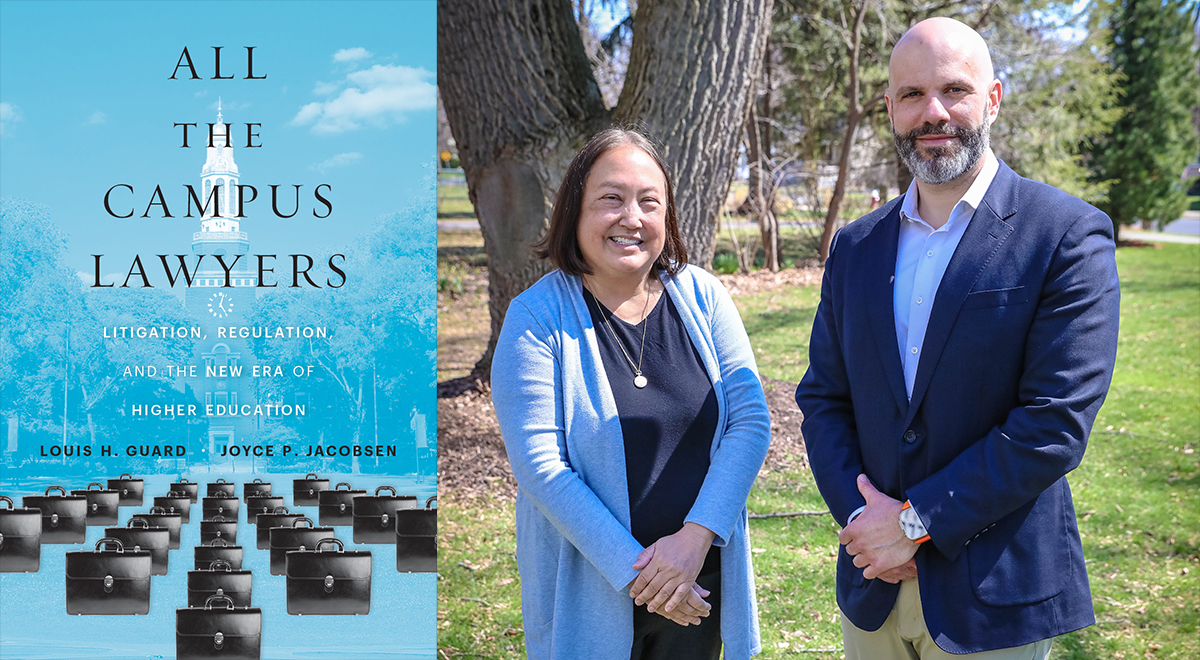Jacobsen Maps Out Legal Landscape of College Campuses in New Book

Free speech. Admissions. On-campus crises. All these issues and others contribute to the growing impact of legal concerns for colleges and universities. Today higher education leaders need to not only know the law, but how to prepare for legal challenges.
In response to this new climate, colleges and universities have employed a rising number of legal experts. Since 1985, the membership of the National Associate of College and University Attorneys (NACUA) has doubled, from around 2,400 members to over 5,000 in 2022, according to Andrews Professor of Economics, Emerita, Joyce P. Jacobsen, who recently co-authored “All the Campus Lawyers: Litigation, Regulations, and the New Era of Higher Education.” At the same time, the number of cases where a college or university was listed as a party have multiplied nearly 10-fold from 1985 to 2021.
“There is increased scrutiny of what colleges and universities are doing, and we see that reflected every day in the higher education press,” Jacobsen said.
The book, co-written with Vice President and General Counsel at Hobart and William Smith Colleges Louis H. Guard, serves as a resource for higher education leaders trying to navigate the evolving legal landscape surrounding college campuses.
In the first section of the book, the authors detail the key moments and landmark cases that have created the demand for expanding legal teams. The authors touch upon such topics as campus free speech and academic freedom, civil rights protections, student affairs, and fundraising, among many other pressing trends in this sphere. The book also explores the economic costs of regulation and what it takes to be in compliance — for example, Title IX led to the creation of full-time coordinator positions on many college campuses.
“Education, regulation, litigation. How did the last two terms get wedded to the first? Guard and Jacobsen explain why the ‘regulatory biome’ of colleges and universities requires nuanced understanding, historical perspective, and multifaceted planning,” said President Michael S. Roth ’78 of the book. “Important reading for anyone interested in the governance and institutional trajectory of higher education.”
In the second section, Guard and Jacobsen outline the role of general counsel as a strategic partner in university governance, rather than viewing legal matters as a separate entity. “In order to deal with all the legal issues coming from outside, you really need a general counsel that is part of these decision-making processes, so that you understand and can also stop things before they get to be as big an issue,” Jacobsen said.
Jacobsen and Guard also forecast some of the issues that may become areas of concern for institutions in the near future — like intellectual property in research, cryptocurrency, legislation on tenure, and campus health — and offered practical guidance for administrators. “You can’t make all your decisions trying to avoid lawsuits, because lawsuits will happen,” Jacobsen told Inside Higher Ed in April. “So you think about how to mitigate them.”
Jacobsen and Guard wrote the book while they were co-teaching a course on the law and economics of higher education at Hobart and William Smith Colleges. It was published in April by the Harvard University Press.
Jacobsen spent over two decades at Wesleyan in several key roles, including Provost and Senior Vice President of Academic Affairs, before serving as President at Hobart and William Smith Colleges. In 2021, she received the Carolyn Shaw Bell Award from the American Economic Association, given annually to an individual who has furthered the status of women in economics.

